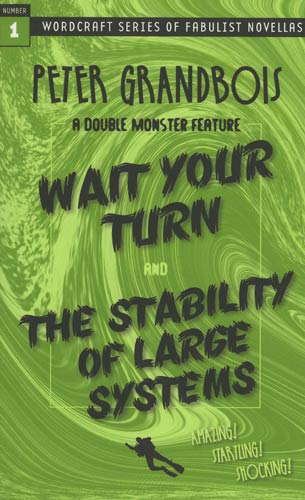Wait Your Turn and The Stability of Large Systems
The best movie monsters come back to life in sequels or remakes that can be masterpieces (Aliens) or miscalculations (the two American Godzillas). The late Friday night TV marathons or Saturday afternoon matinees that influenced at least three generations of movie makers and goers are a regular part of Turner Classic Movie Channel’s schedule. Like Mary Shelley’s Frankenstein (his monster played by Boris Karloff, Christopher Lee, and Benedict Cumberbatch to name a few), classic movie monsters endear because they are more human than their creators or tormentors. The best movie monsters come back to life in sequels or remakes that can be masterpieces (Aliens) or miscalculations (the two American Godzillas). The late Friday night TV marathons or Saturday afternoon matinees that influenced at least three generations of movie makers and goers are a regular part of Turner Classic Movie Channel’s schedule. Like Mary Shelley’s Frankenstein (his monster played by Boris Karloff, Christopher Lee, and Benedict Cumberbatch to name a few), classic movie monsters endear because they are more human than their creators or tormentors.
Peter Grandbois gives two great B-movie monsters literary life in his fun double feature, Wait Your Turn and The Stability of Large Systems. He treats both monsters as real, not fictitious, providing them with backstories and peeks into what happened after the final credits rolled. The atmospheres of both stories remain delightfully low budget; otherwise, the writing would have been more false than the SONY executives feigning movie knowledge in their leaked e-mails.
“Wait Your Turn” is narrated by Gill Man, star of The Creature from the Black Lagoon (1954), Revenge of the Creature (1955), and The Creature Walks Among Us (1956). Set up like a movie plot, Gill Man tells his life story to a boy who has seen “nothing” on the Universal Studios tour. He claims he hasn’t “always been a monster,” or “lived at the bottom of a lagoon.” Studio executives even fit him with the lungs his fictitious self receives on screen.
Grandbois makes Gill Man a contract player who gets his big break playing the prehistoric Amazonian amphibian “sliming along the bottom.” Actors that appeared in the three films are characters in this story. Yet there is no mention of Ben Chapman (land scenes) or Ricou Browning (water scenes) who divided the Gill Man role. In fact, Gill Man marries his Creature from the Black Lagoon damsel in distress, Julia Adams, and has an affair with Revenge of the Creature’s leading lady Lori Nelson. Hollywood treats Gill Man no differently than any other celebrity. . . until The Creature Walks Among Us flops at the box office. Being treated as box office poison raises deep-rooted doubts, turning Gill Man into a genuine monster.
“Hollywood contents itself with surfaces,” Gill Man reflects. “They think they’ve gone deep when they burn away a monster’s skin and find a human being underneath.” He would be pleased that contemporary fan boys and girls regard his on-film treatment as monstrous and would warmly welcome him at Comic Con.
All it takes is the opening paragraph to realize that the protagonist of “The Stability of Large Systems” is Andre Delambre, aka The Fly (1958). Grandbois has Dr. Delambre tell his story through journaling. He is a pompous jerk whose grandiose musings such as “The man on the threshold of awakening is alone,” and “The scientist on the verge of discovery is a god” lead to his failed experiment. This is both a throwback to Gothic literature—and a way of having the Doctor speak for himself. His altered appearance renders him speechless on screen until the final scene.
There is some deviation from David Hedison (the half man/half fly who would go on to play Felix Leiter in two James Bond films)/Vincent Price shocker that started the franchise (the others being 1959’s Return of the Fly and 1965’s Curse of the Fly). The first is that the location has changed from Montreal to Paris. Another is that Dr. Delambre attempts teleportation to restore his marriage. “You’ve changed,” Madame Delmbre tells her husband repeatedly before teleporting himself and the unseen fly who got into his equipment. Most of all, his fate is both the same and different as in that first film. Unlike poor Gill Man, The Fly retains some control over his life.
Along with being entertaining, both stories also shed light on Gill Man and Fly’s sex lives. David Cronenberg explored this is in his grotesque, brilliant 1986 update of The Fly, and left it to the audience’s imagination. Not so here. This too humanizes the monster-men.
“Wait Your Turn” and “The Stability of Large Systems” is directed at a specific audience who like their movie monsters without CGI. They will cheer all over again for these two anti-heroes. Those not fortunate enough to have spent quality-viewing time with them may well seek them out. They live on DVD, cable, Internet streaming, and now in print.





